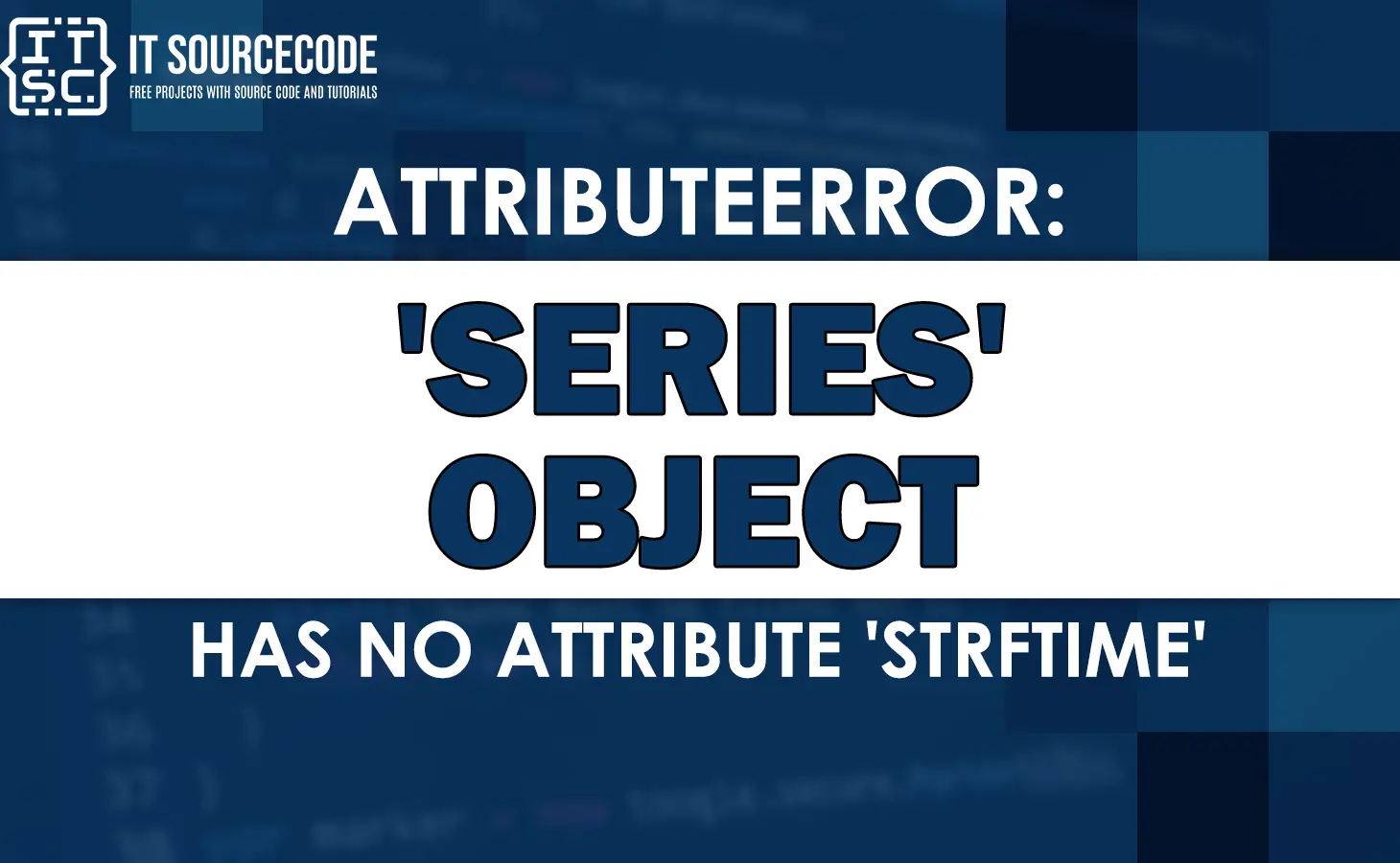Struggling to fix the “attributeerror: series object has no attribute strftime“ error message while working on Python? Then this article is for you.
Continue to read on in this article, because we are going to discuss what this error means, why it occurs, how to resolve it, and certainly the solution to this error.
What is “attributeerror: series object has no attribute strftime” error?
The “attributeerror series object has no attribute strftime“ is an error message that occurs when you are trying to use the strftime() method on a Pandas Series object.
The strftime() method is used to format datetime objects into strings. However, not all Pandas objects have this method, which can lead to this error message.
Why does this error ‘series’ object has no attribute ‘strftime’ occur?
This ‘series’ object has no attribute ‘strftime’ error occurs when you are trying to use the string formatter function strftime() on a pandas Series.
In addition to that, this error occurs because the ‘strftime’ method is not available for a Pandas ‘series’ object. To fix the error, use the “series dt accessor” and “pd.to_datetime,” then you can call the strftime method.
How to resolve “attributeerror: series object has no attribute strftime” error?
Luckily, solving this error message is not that hard. It is just indicating that the “series object” you are working with does not contain datetime objects. To resolve this error, you have two options:
- Convert the series object to a datetime object using the pd.to_datetime() method.
- Ensure that the Series object you are working with contains datetime objects.
Solution for “attributeerror: series object has no attribute strftime” error
Here’s the solution that will help you fix the error in no time.
Solution: Convert the Series Object to a Datetime Object Using pd.to_datetime()
When you have a series object that contains datetime strings, you can convert it to a datetime object using the pd.to_datetime() method. Here are the following examples:
Example 1:
import pandas as pd
dates = pd.Series (['2023-3-22 3:30.000'])
dates = pd.to_datetime(dates)
print(dates.dt.strftime('%Y-%m-%d %H:%M:%S.%f'))
Output:
0 2023-03-22 03:30:00.000000
dtype: objectExample 2:
from datetime import datetime
datetoday = '2023-03-22 03:30:00.000000'
datetime_obj = datetime.strptime(datetoday, '%Y-%m-%d %H:%M:%S.%f')
print(datetime_obj.strftime("%A, %d. %B %Y %I:%M%p"))Output:
Wednesday, 22. March 2023 03:30AMExample 3:
import pandas as pd
# Create a Series object with datetime strings
dates = pd.Series(['2021-01-01', '2022-01-02', '2023-01-03'])
# Convert the Series object to a datetime object
dates = pd.to_datetime(dates)
# Use the strftime() method on the datetime object
print(dates.dt.strftime('%Y-%m-%d'))Output:
0 2021-01-01
1 2022-01-02
2 2023-01-03
dtype: objectExample 4:
from datetime import datetime
today = datetime.today()
print(today)
todays_date = today.strftime('%Y-%m-%d')
print(todays_date)
current_time = today.strftime('%H:%M:%S')
print(current_time)Output:
2023-03-22 15:58:20.039563
2023-03-22
15:58:20To make things clear, the strftime() method is supported by date, datetime and time objects and returns a string that represents the date and time, controlled by an explicit format string.
Meanwhile, the datetime.strptime() method or the dt.strftime returns a datetime object that corresponds to the provided date string, parsed according to the format.
Related Articles for Python Errors
- Attributeerror: ‘nonetype’ object has no attribute ‘split’
- Attributeerror str object has no attribute get
- Attributeerror: str object has no attribute write
Conclusion
By following the solution that has been provided above, you can easily fix the “attributeerror: series object has no attribute strftime“ error.
We are hoping that this article provides you with a sufficient solution; if yes, we would love to hear some thoughts from you.
Thank you very much for reading to the end of this article. Just in case you have more questions or inquiries, feel free to comment, and you can also visit our website for additional information.

